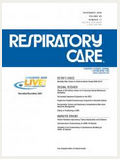 Patients with Duchenne muscular dystrophy (DMD) have seen their life expectancy increase substantially in recent years. Early detection and management of respiratory complications have a lot to do with it. A classic distinction is made between invasive ventilation (IV) on a tracheostomy tube, and non-invasive ventilation (NIV), the latter being most often intermittent.
Patients with Duchenne muscular dystrophy (DMD) have seen their life expectancy increase substantially in recent years. Early detection and management of respiratory complications have a lot to do with it. A classic distinction is made between invasive ventilation (IV) on a tracheostomy tube, and non-invasive ventilation (NIV), the latter being most often intermittent.
In an article published in August 2020, the Direction des Actions Médicales of AFM-Telethon reports the results of a study evaluating the psychological impact of the various methods of respiratory assistance on the quality of life (QoL) of the patients concerned. In this study, 192 adults with DMD and living in France participated in a prospective survey by answering a questionnaire mainly exploring their QoL in three dimensions (professional life, leisure / vacation and family life) as well as their health condition. Overall (around 85%), this ventilated population was satisfied with the medical care they received, regardless of the level of dependence on the ventilator or the ventilation modalities (non-invasive or by tracheostomy). It should be noted that in both populations, gastrostomy patients needed urgent consultations more frequently for digestive disorders. However, individuals who received invasive ventilation were more prone to insomnia than others.
